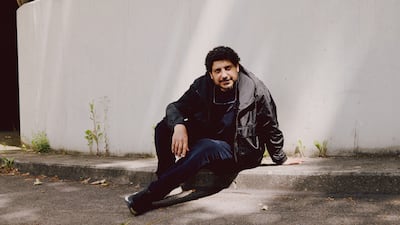When Art Basel announced this summer that it would make its Middle East debut with a Doha edition, the region's art scene was abuzz with excitement.
Developed in partnership with Qatar Sports Investments and the cultural agency QC Plus, the inaugural Gulf fair is set to run from February 5 to 7. It will take place at the cultural hub M7 and around the Doha Design District in Msheireb, near landmarks including the National Museum of Qatar.
Internationally acclaimed Egyptian artist Wael Shawky was recently appointed as artistic director of the event. Alongside Art Basel’s global director of fairs, Vincenzo de Bellis, Shawky will head the fair’s curatorial vision and help shape the gallery selection process.
Shawky, who represented Egypt at the 2024 Venice Architecture Biennale, has been exhibited worldwide. His often satirical artworks blend history from non-western perspectives, ancient myths and contemporary critique.
He believes the modern and contemporary art fair making a home in Doha is an opportunity to grow and shape the region's entire art scene, adding more than just commercial value.

“What I love about Qatar is there is always this idea of doing things on a bigger scale, creating something for the whole region, and this is what I like a lot,” Shawky tells The National. “There is a need for a professional art market that we don't really have, and a need for professional galleries … in Egypt or Qatar, there are very few.”
As the artistic director of Qatar Museums’ Fire Station, a residency programme for young creatives, Shawky says education and commercial goals must go hand in hand to build a healthy creative ecosystem.
“I’m honoured to take part in this first launch of Art Basel Qatar because it gives the responsibility to shape the art scene in the region,” he says. “As an artist I know that as much as we have to have proper art institutions, we must also have proper art education, in order to have a proper professional market.
“I cannot convince the young generation to make art if they cannot live from it. This is something that must complete the cycle,” he continues. “Part of the Art Basel Qatar programming will include Fire Station becoming a platform for educational programmes.”
There will be a few differences between Art Basel Qatar and its international sister editions in Switzerland, Hong Kong and Miami. This inaugural event will be slightly smaller than the others and have a different format. Instead of the traditional booth model, galleries will create solo presentations responding to the fair’s overarching theme, with a focus on fostering greater engagement with the artwork on show.

While the selection process is still under way, about 80 to 100 international galleries will participate, spread across M7 and the Doha Design District, as well as public spaces in Msheireb, where they hope to offer additional programming, artistic performances and installations.
“What I'm trying to push a lot in this art fair is to have more Arab artists, which is a bit of a problem, because in the Arab world, we don’t have a large amount of professional galleries that can apply to Art Basel,” Shawky explains. “I also know many really great artists that don't have galleries. So that's a lot of the conversations we are having now, but we can think of it as a long-term project.
“Because each gallery is just presenting one artist, it will hopefully encourage them to bring the best, rather than just a mix of everything that can be sold,” he adds.
“Many artists I speak with are tired of art fairs. Sometimes galleries exhibit the work in a bad way. I don’t want to blame galleries, but we want the artists to be more involved with the presentations again, for the sake of elevating the works.”
The theme for 2026 will be Becoming, intended as a meditation on humanity’s continuing transformation and the evolving systems that shape how we live, believe and create meaning. With the region’s rapid development, and the new fair contributing to the art changing scene, it seems a fitting theme.
The theme will capture how heritage and tradition intersect with modernity and technology, how once insular societies adapt to globalism, and how the seemingly endless growth of urban life is shaping our lives.
“For me, these types of developments are often connected to landscape both literally and figuratively,” Shawky says. “They just develop from one system to another. I'm trying to look at this idea across the whole region – the idea of moving from Bedouin to tribal society to urbanism, for example. “All the ways societies dream of moving from one system to a higher system – it’s endless – so we’ve been looking for artists that explore this in some way.”

